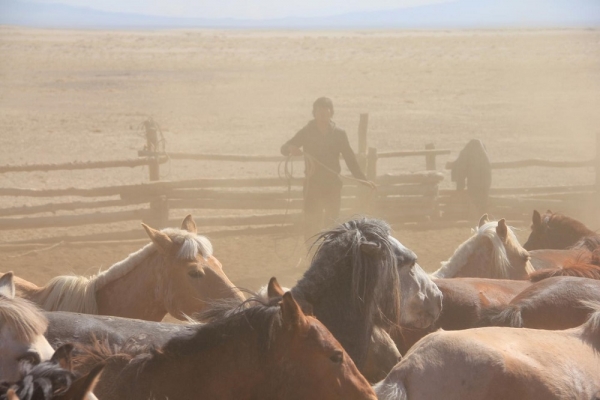Researchers have recently cracked the code on the modern horse’s genomic sequence, unveiling what genes our ancestors were selecting for in these beasts of burden for the last 5,500 years. This work also reveals what kind of genetic variation was lost along the way, leading to the inevitable disappearance of wild horses that we see today.
There remain some wild horse populations in various places. Europe and North America boast isolated instances of this, but it has long been known that these are rag-tag groups of escaped or released domestics that have returned to the wild – not true wild populations.
The last true team of genetically diverse and undomesticated horses in the world is thought to be the Przewalski’s horse population in Mongolia. This group consists of the descendants of a mere 13 individual wild horses who were only able to remain truly wild (ironically) through human intervention and conservation strategies.
A study recently published in the journal Proceeding of the National Academy of Sciences (PNAS) details how experts were able to sequence the genetics of these wild horses and a few of their domestic counterparts. To help aid the comparison, the researchers also worked to asses ancient DNA from wild horse lineages of the past, dating between 16,000 and 43,000 years ago.
By doing so, the team was able to identify a set of 125 specific genes that likely led to the near domestication of horses.
“We provide the most extensive list of gene candidates that have been favored by humans following the domestication of horses,” researcher Beth Shapiro explained in a statement. “This list is fascinating as it includes a number of genes involved in the development of muscle and bones. This probably reveals the genes that helped utilizing horses for transportation.”
“Perhaps even more exciting as it represents the hallmark of animal domestication, we identify genes controlling animal behavior and the response to fear,” added study co-author Ludovic Orlando. “These genes could have been the key for turning wild animals into more docile domesticated forms.”
However, this domestication came at a cost. As is seen in dog populations, the extensive domestication of these animals led to a loss in healthy genetic variety, and the inevitable accumulation of invisible “bad genes.”
“Mutations that negatively impact genes are not eliminated by selection and can even increase in frequency when populations are small,” explained Laurent Excoffie, the group leader at the Swiss Institute for Bioinformatics. “Domestication thus generally comes at a cost, as deleterious mutations can accumulate in the genome. Horses now provide another example of this phenomenon.”

